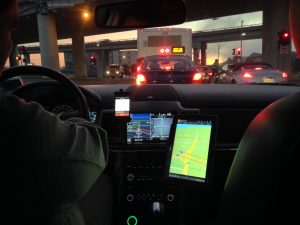 Uber has developed a new website called Movement that will give cities access to the company’s traffic flow data. The new Movement website is intended for use by those interested in improving urban mobility.
Uber has developed a new website called Movement that will give cities access to the company’s traffic flow data. The new Movement website is intended for use by those interested in improving urban mobility.
In a blog post written on Jan. 8, the company stated, “City planners face a myriad of challenges, and we hope to help tackle more of them over time. We’re excited to partner with city officials, urban planners and research organizations to continue building features that today’s transportation planners need.”
City planners are often forced to make key, transformational infrastructure decisions without access to proper information about the actual conditions and causes of the issue they are attempting to fix. With Uber’s Movement website, it is hoped that making decisions will be easier and simpler to justify with accurate data backing them up.
The data on the Movement website is organized around traffic analysis zones within cities. Users of the website can adjust things like day of week, time of day, and zone, as well as download the data for inputting into their own models. Uber will begin sharing the data with specific organizations who apply for early access. Access will later be expanded to the general public.
Uber releasing this kind of data publicly has concerned privacy advocates. However, the company says that it can anonymize this data so that it isn’t tied to specific individuals in most cases. Uber says that if there isn’t enough data for a given area to properly protect driver and passenger identities, results will ne be returned for that location.
Uber has historically resisted sharing its data with governments. In New York City, the company fought against submitting detailed summaries of its trips to the Taxi and Limousine Commission every month. In Seattle, Uber attacked a public records request forcing it and Lyft to reveal certain ride data and won in court.
Uber now says it wants to do some good in the cities where it operates. The company also stands to benefit from infrastructure improvements in cities. More efficient transportation in a city means more efficient Uber service and happier customers willing to use the service more often.
